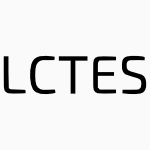185 papers:
 CASE-2015-NouaouriSA #data mining #mining #predict #problem
CASE-2015-NouaouriSA #data mining #mining #predict #problem- Evidential data mining for length of stay (LOS) prediction problem (IN, AS, HA), pp. 1415–1420.
 DAC-2015-YaoHC #constraints #named
DAC-2015-YaoHC #constraints #named- PACOR: practical control-layer routing flow with length-matching constraint for flow-based microfluidic biochips (HY, TYH, YC), p. 6.
 DATE-2015-LiXWNP #fine-grained #multi #power management #reduction #using
DATE-2015-LiXWNP #fine-grained #multi #power management #reduction #using- Leakage power reduction for deeply-scaled FinFET circuits operating in multiple voltage regimes using fine-grained gate-length biasing technique (JL, QX, YW, SN, MP), pp. 1579–1582.
 CIAA-2015-Giaquinta #automaton #nondeterminism
CIAA-2015-Giaquinta #automaton #nondeterminism- Run-Length Encoded Nondeterministic KMP and Suffix Automata (EG), pp. 102–113.
 FM-2015-DuLT #independence #ltl #monitoring #policy #runtime
FM-2015-DuLT #independence #ltl #monitoring #policy #runtime- Trace-Length Independent Runtime Monitoring of Quantitative Policies in LTL (XD, YL, AT), pp. 231–247.
 DUXU-UI-2015-SahitoCHHS #tablet
DUXU-UI-2015-SahitoCHHS #tablet- Significance of Line Length for Tablet PC Users (WAS, HIC, ZH, SRH, FS), pp. 587–596.
 ICML-2015-SunWKM #geometry #network
ICML-2015-SunWKM #geometry #network- Information Geometry and Minimum Description Length Networks (KS, JW, AK, SMM), pp. 49–58.
 ICML-2015-TewariC #bound #documentation #fault #learning #matter #question #rank
ICML-2015-TewariC #bound #documentation #fault #learning #matter #question #rank- Generalization error bounds for learning to rank: Does the length of document lists matter? (AT, SC), pp. 315–323.
 SIGIR-2015-TrippasSSC #communication #comprehension #summary #towards #web
SIGIR-2015-TrippasSSC #communication #comprehension #summary #towards #web- Towards Understanding the Impact of Length in Web Search Result Summaries over a Speech-only Communication Channel (JRT, DS, MS, LC), pp. 991–994.
 CAV-2015-ZhengGSTDZ #constraints #effectiveness #equation #regular expression #string
CAV-2015-ZhengGSTDZ #constraints #effectiveness #equation #regular expression #string- Effective Search-Space Pruning for Solvers of String Equations, Regular Expressions and Length Constraints (YZ, VG, SS, OT, JD, XZ), pp. 235–254.
 CASE-2014-XuLYM #integer #probability #programming
CASE-2014-XuLYM #integer #probability #programming- A mixed integer programming model for Bed planning considering stochastic length of stay (LX, NL, XY, FM), pp. 1069–1074.
 STOC-2014-ArtemenkoS #generative #pseudo
STOC-2014-ArtemenkoS #generative #pseudo- Pseudorandom generators with optimal seed length for non-boolean poly-size circuits (SA, RS), pp. 99–108.
 CIAA-2014-GusevP #automaton
CIAA-2014-GusevP #automaton- Reset Thresholds of Automata with Two Cycle Lengths (VVG, EVP), pp. 200–210.
 CHI-2014-HayashiMH #gesture #identification #using
CHI-2014-HayashiMH #gesture #identification #using- Wave to me: user identification using body lengths and natural gestures (EH, MM, JIH), pp. 3453–3462.
 ICEIS-v1-2014-CaetanoLC #approach #case study #data-driven #predict
ICEIS-v1-2014-CaetanoLC #approach #case study #data-driven #predict- A Data-driven Approach to Predict Hospital Length of Stay — A Portuguese Case Study (NC, RMSL, PC), pp. 407–414.
 ICPR-2014-0005ZTS #detection #segmentation
ICPR-2014-0005ZTS #detection #segmentation- Human Hair Segmentation and Length Detection for Human Appearance Model (YW, ZZ, EKT, BS), pp. 450–454.
 KMIS-2014-VelosoPSSRA0 #data mining #mining #modelling #predict #realtime
KMIS-2014-VelosoPSSRA0 #data mining #mining #modelling #predict #realtime- Real-Time Data Mining Models for Predicting Length of Stay in Intensive Care Units (RV, FP, MFS, ÁMS, FR, AA, JM), pp. 245–254.
 CGO-2014-WangWP #optimisation #reduction #virtual machine
CGO-2014-WangWP #optimisation #reduction #virtual machine- Optimizing R VM: Allocation Removal and Path Length Reduction via Interpreter-level Specialization (HW, PW, DAP), p. 295.
 CASE-2013-TanTL #policy #resource management
CASE-2013-TanTL #policy #resource management- Improving patient length-of-stay in emergency department through dynamic resource allocation policies (KWT, WHT, HCL), pp. 984–989.
 DAC-2013-HoOCT #array
DAC-2013-HoOCT #array- Coupling-aware length-ratio-matching routing for capacitor arrays in analog integrated circuits (KHH, HCO, YWC, HFT), p. 6.
 DATE-2013-LuL #multi
DATE-2013-LuL #multi- Slack budgeting and slack to length converting for multi-bit flip-flop merging (CCL, RBL), pp. 1837–1842.
 ICDAR-2013-TatawRK #clustering #using
ICDAR-2013-TatawRK #clustering #using- Clustering of Symbols Using Minimal Description Length (OMT, TR, EJK), pp. 180–184.
 CIAA-2013-KushikY #finite #nondeterminism #on the #sequence #state machine
CIAA-2013-KushikY #finite #nondeterminism #on the #sequence #state machine- On the Length of Homing Sequences for Nondeterministic Finite State Machines (NK, NY), pp. 220–231.
 SIGIR-2013-ArroyueloGOS #documentation #identifier #performance
SIGIR-2013-ArroyueloGOS #documentation #identifier #performance- Document identifier reassignment and run-length-compressed inverted indexes for improved search performance (DA, SG, MO, VS), pp. 173–182.
 SIGIR-2013-WilkieA #performance
SIGIR-2013-WilkieA #performance- Relating retrievability, performance and length (CW, LA), pp. 937–940.
 LCTES-2013-JangKL #algorithm #parallel
LCTES-2013-JangKL #algorithm #parallel- Practical speculative parallelization of variable-length decompression algorithms (HJ, CK, JWL), pp. 55–64.
 CAV-2013-ChevalCP #how #privacy
CAV-2013-ChevalCP #how #privacy- Lengths May Break Privacy — Or How to Check for Equivalences with Length (VC, VC, AP), pp. 708–723.
 DATE-2012-ShafiqueZRKH #adaptation #power management
DATE-2012-ShafiqueZRKH #adaptation #power management- Power-efficient error-resiliency for H.264/AVC Context-Adaptive Variable Length Coding (MS, BZ, SR, FK, JH), pp. 697–702.
 DRR-2012-Bianne-BernardMLMK #modelling #recognition #word
DRR-2012-Bianne-BernardMLMK #modelling #recognition #word- Variable length and context-dependent HMM letter form models for Arabic handwritten word recognition (ALBB, FM, LLS, CM, CK).
 CHI-2012-CockburnQGF #documentation
CHI-2012-CockburnQGF #documentation- Improving scrolling devices with document length dependent gain (AC, PQ, CG, SF), pp. 267–276.
 CIKM-2012-CumminsO #automation #constraints #normalisation
CIKM-2012-CumminsO #automation #constraints #normalisation- A constraint to automatically regulate document-length normalisation (RC, CO), pp. 2443–2446.
 CIKM-2012-SrinivasanBC #modelling #using
CIKM-2012-SrinivasanBC #modelling #using- Segmenting web-domains and hashtags using length specific models (SS, SB, RC), pp. 1113–1122.
 ICPR-2012-Lotte #classification
ICPR-2012-Lotte #classification- A new feature and associated optimal spatial filter for EEG signal classification: Waveform Length (FL), pp. 1302–1305.
 ICPR-2012-Martin-FelezOM #recognition #video
ICPR-2012-Martin-FelezOM #recognition #video- Exploring the effects of video length on gait recognition (RMF, JO, RAM), pp. 3411–3414.
 MLDM-2012-SapkotaBS #grammar inference #principle #using
MLDM-2012-SapkotaBS #grammar inference #principle #using- Unsupervised Grammar Inference Using the Minimum Description Length Principle (US, BRB, APS), pp. 141–153.
 DAC-2011-PaulaNNOH #named
DAC-2011-PaulaNNOH #named- TAB-BackSpace: unlimited-length trace buffers with zero additional on-chip overhead (FMdP, AN, ZN, AO, AJH), pp. 411–416.
 FoSSaCS-2011-Clairambault #estimation #game studies #interactive #semantics
FoSSaCS-2011-Clairambault #estimation #game studies #interactive #semantics- Estimation of the Length of Interactions in Arena Game Semantics (PC), pp. 335–349.
 DLT-2011-Fujioka
DLT-2011-Fujioka- Morphic Characterizations in Terms of Insertion Systems with a Context of Length One (KF), pp. 474–475.
 DUXU-v2-2011-ChangH #performance
DUXU-v2-2011-ChangH #performance- Effects of Menu Types and Item Lengths on Operation Efficiency (YHC, TKPH), pp. 376–383.
 HIMI-v1-2011-AsaoKK
HIMI-v1-2011-AsaoKK- Effects of Joint Acceleration on Rod’s Length Perception by Dynamic Touch (TA, YK, KK), pp. 381–390.
 ECIR-2011-PeregoST #documentation #identifier #representation
ECIR-2011-PeregoST #documentation #identifier #representation- Representing Document Lengths with Identifiers (RP, FS, NT), pp. 665–669.
 KDIR-2011-LiVM #graph #learning #relational #using #visual notation
KDIR-2011-LiVM #graph #learning #relational #using #visual notation- Unsupervised Handwritten Graphical Symbol Learning — Using Minimum Description Length Principle on Relational Graph (JL, CVG, HM), pp. 172–178.
 ICST-2011-FraserA #how #matter
ICST-2011-FraserA #how #matter- It is Not the Length That Matters, It is How You Control It (GF, AA), pp. 150–159.
 ICST-2011-GoKKL #approach #generative #testing #variability
ICST-2011-GoKKL #approach #generative #testing #variability- A Systematic Test Case Generation Approach for Testing Message Length Variability (KG, SK, MK, JL), pp. 397–406.
 DAC-2010-LiuKLC #bound #concurrent #multi #thread
DAC-2010-LiuKLC #bound #concurrent #multi #thread- Multi-threaded collision-aware global routing with bounded-length maze routing (WHL, WCK, YLL, KYC), pp. 200–205.
 CIKM-2010-AjmeraKLMP #corpus #parallel #web
CIKM-2010-AjmeraKLMP #corpus #parallel #web- Alignment of short length parallel corpora with an application to web search (JA, HSK, KPL, SM, MP), pp. 1477–1480.
 ICPR-2010-BaradaraniMW #design #image #on the
ICPR-2010-BaradaraniMW #design #image #on the- On the Design of a Class of Odd-Length Biorthogonal Wavelet Filter Banks for Signal and Image Processing (AB, PM, QMJW), pp. 2282–2285.
 ICPR-2010-Rivest-HenaultCDL #segmentation
ICPR-2010-Rivest-HenaultCDL #segmentation- Length Increasing Active Contour for the Segmentation of Small Blood Vessels (DRH, MC, SD, CL), pp. 2796–2799.
 SAC-2010-AlmeidaYA10a #principle #using
SAC-2010-AlmeidaYA10a #principle #using- Filtering spams using the minimum description length principle (TAA, AY, JA), pp. 1854–1858.
 ICST-2010-Arcuri10a #sequence #testing
ICST-2010-Arcuri10a #sequence #testing- Longer is Better: On the Role of Test Sequence Length in Software Testing (AA), pp. 469–478.
 ICST-2010-BelliLBS #detection #fault #sequence #testing
ICST-2010-BelliLBS #detection #fault #sequence #testing- Fault Detection Likelihood of Test Sequence Length (FB, ML, CJB, HAS), pp. 402–411.
 DATE-2009-LiuX09a #framework #reduction
DATE-2009-LiuX09a #framework #reduction- A generic framework for scan capture power reduction in fixed-length symbol-based test compression environment (XL, QX), pp. 1494–1499.
 SIGMOD-2009-HadjieleftheriouKS #approximate #incremental #maintenance #normalisation #string
SIGMOD-2009-HadjieleftheriouKS #approximate #incremental #maintenance #normalisation #string- Incremental maintenance of length normalized indexes for approximate string matching (MH, NK, DS), pp. 429–440.
 ICPC-J-2008-BinkleyLMM09 #identifier #memory management
ICPC-J-2008-BinkleyLMM09 #identifier #memory management- Identifier length and limited programmer memory (DB, DL, SM, CM), pp. 430–445.
 STOC-2009-Efremenko
STOC-2009-Efremenko- 3-query locally decodable codes of subexponential length (KE), pp. 39–44.
 SEFM-2009-BresolinGMS #constraints #integer #logic
SEFM-2009-BresolinGMS #constraints #integer #logic- Right Propositional Neighborhood Logic over Natural Numbers with Integer Constraints for Interval Lengths (DB, VG, AM, GS), pp. 240–249.
 HIMI-II-2009-OmoriHWMM #mobile #readability
HIMI-II-2009-OmoriHWMM #mobile #readability- Influence of Vertical Length of Characters on Readability in Mobile Phones (MO, SH, TW, SM, MM), pp. 430–438.
 CIKM-2009-SunDML
CIKM-2009-SunDML- Matching stream patterns of various lengths and tolerances (HS, KD, FM, JL), pp. 1477–1480.
 SIGIR-2009-ParaparLB #documentation #modelling
SIGIR-2009-ParaparLB #documentation #modelling- Compression-based document length prior for language models (JP, DEL, AB), pp. 652–653.
 SAC-2009-CaldersGPR #mining #process #using
SAC-2009-CaldersGPR #mining #process #using- Using minimum description length for process mining (TC, CWG, MP, AR), pp. 1451–1455.
 SAC-2009-YipH #bound #consistency #constraints
SAC-2009-YipH #bound #consistency #constraints- Length-lex bound consistency for knapsack constraints (JY, PVH), pp. 1397–1401.
 ASE-2008-AndrewsGWX #effectiveness #random testing
ASE-2008-AndrewsGWX #effectiveness #random testing- Random Test Run Length and Effectiveness (JHA, AG, MW, RGX), pp. 19–28.
 DATE-2008-KoenigSB #algorithm #novel #recursion
DATE-2008-KoenigSB #algorithm #novel #recursion- A Novel Recursive Algorithm for Bit-Efficient Realization of Arbitrary Length Inverse Modified Cosine Transforms (RK, TS, JB), pp. 604–609.
 SIGMOD-2008-YangWL #approximate #cost analysis #query #string
SIGMOD-2008-YangWL #approximate #cost analysis #query #string- Cost-based variable-length-gram selection for string collections to support approximate queries efficiently (XY, BW, CL), pp. 353–364.
 PEPM-2008-Mu #algorithm #bound #problem
PEPM-2008-Mu #algorithm #bound #problem- Maximum segment sum is back: deriving algorithms for two segment problems with bounded lengths (SCM), pp. 31–39.
 STOC-2008-NordstromH #towards
STOC-2008-NordstromH #towards- Towards an optimal separation of space and length in resolution (JN, JH), pp. 701–710.
 LATA-2008-SalomaaSY
LATA-2008-SalomaaSY- Length Codes, Products of Languages and Primality (AS, KS, SY), pp. 476–486.
 CIKM-2008-LosadaAB #documentation
CIKM-2008-LosadaAB #documentation- Revisiting the relationship between document length and relevance (DEL, LA, MB), pp. 419–428.
 ECIR-2008-BlancoB #documentation #modelling #probability
ECIR-2008-BlancoB #documentation #modelling #probability- Probabilistic Document Length Priors for Language Models (RB, AB), pp. 394–405.
 ICPR-2008-HulkkonenH #detection #monitoring
ICPR-2008-HulkkonenH #detection #monitoring- A minimum description length principle based method for signal change detection in machine condition monitoring (JJH, JVH), pp. 1–4.
 ICPR-2008-XuanSCTTL #image
ICPR-2008-XuanSCTTL #image- Reversible binary image data hiding by run-length histogram modification (GX, YQS, PC, XT, JT, JL), pp. 1–4.
 KDD-2008-IfrimBW #categorisation #n-gram #performance
KDD-2008-IfrimBW #categorisation #n-gram #performance- Fast logistic regression for text categorization with variable-length n-grams (GI, GHB, GW), pp. 354–362.
 SIGIR-2008-ArampatzisK #case study #query
SIGIR-2008-ArampatzisK #case study #query- A study of query length (AA, JK), pp. 811–812.
 SIGIR-2008-ZhuCC #personalisation
SIGIR-2008-ZhuCC #personalisation- The impact of history length on personalized search (YZ, JC, JGC), pp. 715–716.
 ISSTA-2008-XuGM #abstraction #testing
ISSTA-2008-XuGM #abstraction #testing- Testing for buffer overflows with length abstraction (RGX, PG, RM), pp. 27–38.
 VLDB-2007-LiWY #approximate #named #performance #query #string #using
VLDB-2007-LiWY #approximate #named #performance #query #string #using- VGRAM: Improving Performance of Approximate Queries on String Collections Using Variable-Length Grams (CL, BW, XY), pp. 303–314.
 STOC-2007-Yekhanin #towards
STOC-2007-Yekhanin #towards- Towards 3-query locally decodable codes of subexponential length (SY), pp. 266–274.
 SIGIR-2007-PhanBW #comprehension #query
SIGIR-2007-PhanBW #comprehension #query- Understanding the relationship of information need specificity to search query length (NP, PB, RW), pp. 709–710.
 SAC-2007-BrunauerLMMP #evolution
SAC-2007-BrunauerLMMP #evolution- Evolution of iterated prisoner’s dilemma strategies with different history lengths in static and cultural environments (RB, AL, HAM, GM, HP), pp. 720–727.
 CSL-2007-Burel #bound #deduction
CSL-2007-Burel #bound #deduction- Unbounded Proof-Length Speed-Up in Deduction Modulo (GB), pp. 496–511.
 RTA-2007-Tatsuta #λ-calculus #μ-calculus
RTA-2007-Tatsuta #λ-calculus #μ-calculus- The Maximum Length of μ-Reduction in λμ-Calculus (MT), pp. 359–373.
 DATE-2006-ShekharKE #equivalence #multi #verification
DATE-2006-ShekharKE #equivalence #multi #verification- Equivalence verification of arithmetic datapaths with multiple word-length operands (NS, PK, FE), pp. 824–829.
 DATE-DF-2006-YehWLW #multi #programmable
DATE-DF-2006-YehWLW #multi #programmable- A 124.8Msps, 15.6mW field-programmable variable-length codec for multimedia applications (CY, CCW, LCL, JSW), pp. 239–243.
 ICALP-v1-2006-BaierEHKSS #bound
ICALP-v1-2006-BaierEHKSS #bound- Length-Bounded Cuts and Flows (GB, TE, AH, EK, HS, MS), pp. 679–690.
 ECIR-2006-KarbasiB #documentation #effectiveness #normalisation #scalability #using
ECIR-2006-KarbasiB #documentation #effectiveness #normalisation #scalability #using- Document Length Normalization Using Effective Level of Term Frequency in Large Collections (SK, MB), pp. 72–83.
 ICPR-v1-2006-JainN #estimation #realtime
ICPR-v1-2006-JainN #estimation #realtime- Real-time Camera Pose and Focal Length Estimation (SJ, UN), pp. 551–555.
 ICPR-v1-2006-KimK #classification #using
ICPR-v1-2006-KimK #classification #using- Simultaneous Classification and VisualWord Selection using Entropy-based Minimum Description Length (SK, ISK), pp. 650–653.
 ICPR-v1-2006-RiponTKI #algorithm #clustering #multi #search-based #using
ICPR-v1-2006-RiponTKI #algorithm #clustering #multi #search-based #using- Multi-Objective Evolutionary Clustering using Variable-Length Real Jumping Genes Genetic Algorithm (KSNR, CHT, SK, MKI), pp. 1200–1203.
 SAC-2006-ArastehHS #adaptation #image #segmentation
SAC-2006-ArastehHS #adaptation #image #segmentation- Adaptive dynamic run-length coding for image segmentation (SA, CCH, ES), pp. 31–36.
 TestCom-2006-UralZ #sequence
TestCom-2006-UralZ #sequence- Reducing the Lengths of Checking Sequences by Overlapping (HU, FZ), pp. 274–288.
 SAC-2005-FalcoTCG #algorithm #clustering #search-based
SAC-2005-FalcoTCG #algorithm #clustering #search-based- A new variable-length genome genetic algorithm for data clustering in semeiotics (IDF, ET, ADC, FG), pp. 923–927.
 SAC-2005-MaG #detection #information retrieval #query
SAC-2005-MaG #detection #information retrieval #query- Query length impact on misuse detection in information retrieval systems (LM, NG), pp. 1070–1075.
 CGO-2005-WuEW #code generation #performance #runtime
CGO-2005-WuEW #code generation #performance #runtime- Efficient SIMD Code Generation for Runtime Alignment and Length Conversion (PW, AEE, AW), pp. 153–164.
 SAT-2005-Gelder #bound #distance #proving
SAT-2005-Gelder #bound #distance #proving- Input Distance and Lower Bounds for Propositional Resolution Proof Length (AVG), pp. 282–293.
 DAC-2004-GuptaKSS #effectiveness #runtime
DAC-2004-GuptaKSS #effectiveness #runtime- Selective gate-length biasing for cost-effective runtime leakage control (PG, ABK, PS, DS), pp. 327–330.
 DAC-2004-LiuM #estimation
DAC-2004-LiuM #estimation- Pre-layout wire length and congestion estimation (QL, MMS), pp. 582–587.
 DATE-v2-2004-NakashimaIOM
DATE-v2-2004-NakashimaIOM- ULSI Interconnect Length Distribution Model Considering Core Utilization (HN, JI, KO, KM), pp. 1210–1217.
 STOC-2004-Gabow
STOC-2004-Gabow- Finding paths and cycles of superpolylogarithmic length (HNG), pp. 407–416.
 ICALP-2004-ChrobakJST #online #scheduling
ICALP-2004-ChrobakJST #online #scheduling- Online Scheduling of Equal-Length Jobs: Randomization and Restarts Help (MC, WJ, JS, TT), pp. 358–370.
 ICPR-v1-2004-HammarstedtKH
ICPR-v1-2004-HammarstedtKH- Affine Structure from Translational Motion with Varying and Unknown Focal Length (PH, FK, AH), pp. 120–123.
 ICPR-v4-2004-LaiY #algorithm #fault #network #predict
ICPR-v4-2004-LaiY #algorithm #fault #network #predict- Successive-Least-Squares Error Algorithm on Minimum Description Length Neural Networks for Time Series Prediction (YNL, SYY), pp. 609–612.
 ICPR-v4-2004-YuWT #estimation #on the
ICPR-v4-2004-YuWT #estimation #on the- On Estimation of Secret Message Length in JSteg-like Steganography (XY, YW, TT), pp. 673–676.
 SIGIR-2004-KampsRS #normalisation #retrieval #xml
SIGIR-2004-KampsRS #normalisation #retrieval #xml- Length normalization in XML retrieval (JK, MdR, BS), pp. 80–87.
 DAC-2003-HuM #clustering #predict
DAC-2003-HuM #clustering #predict- Wire length prediction based clustering and its application in placement (BH, MMS), pp. 800–805.
 DATE-2003-GoelM #architecture #design
DATE-2003-GoelM #architecture #design- Layout-Driven SOC Test Architecture Design for Test Time and Wire Length Minimization (SKG, EJM), pp. 10738–10741.
 ICDAR-2003-Schambach #adaptation #recognition #word
ICDAR-2003-Schambach #adaptation #recognition #word- Model Length Adaptation of an HMM based Cursive Word Recognition System (MPS), pp. 109–113.
 ICDAR-2003-ShafieiR #algorithm #markov #modelling #online #segmentation #using #verification
ICDAR-2003-ShafieiR #algorithm #markov #modelling #online #segmentation #using #verification- A New On-Line Signature Verification Algorithm Using Variable Length Segmentation and Hidden Markov Models (MMS, HRR), p. 443–?.
 SIGIR-2003-BelkinKKKLMTYC #information retrieval #interactive #query
SIGIR-2003-BelkinKKKLMTYC #information retrieval #interactive #query- Query length in interactive information retrieval (NJB, DK, GK, JYK, HJL, GM, MC(T, XJY, CC), pp. 205–212.
 RTA-2003-MoserW
RTA-2003-MoserW- Relating Derivation Lengths with the Slow-Growing Hierarchy Directly (GM, AW), pp. 296–310.
 DAC-2002-ChandraC #reduction #testing #using
DAC-2002-ChandraC #reduction #testing #using- Reduction of SOC test data volume, scan power and testing time using alternating run-length codes (AC, KC), pp. 673–678.
 DAC-2002-MolinaMH #multi #synthesis
DAC-2002-MolinaMH #multi #synthesis- High-level synthesis of multiple-precision circuitsindependent of data-objects length (MCM, JMM, RH), pp. 612–615.
 DATE-2002-MolinaMH #independence #multi
DATE-2002-MolinaMH #independence #multi- Multiple-Precision Circuits Allocation Independent of Data-Objects Length (MCM, JMM, RH), pp. 909–913.
 DLT-2002-BassinoCN #standard #word
DLT-2002-BassinoCN #standard #word- The Average Lengths of the Factors of the Standard Factorization of Lyndon Words (FB, JC, CN), pp. 307–318.
 ICALP-2002-BjorklundH
ICALP-2002-BjorklundH- Finding a Path of Superlogarithmic Length (AB, TH), pp. 985–992.
 ICML-2002-FitzgibbonDA #approximate #monte carlo #polynomial
ICML-2002-FitzgibbonDA #approximate #monte carlo #polynomial- Univariate Polynomial Inference by Monte Carlo Message Length Approximation (LJF, DLD, LA), pp. 147–154.
 ICPR-v2-2002-GibsonCT #abstraction #modelling #using #visual notation
ICPR-v2-2002-GibsonCT #abstraction #modelling #using #visual notation- Visual Abstraction of Wildlife Footage Using Gaussian Mixture Models and the Minimum Description Length Criterion (DPG, NWC, BTT), pp. 814–817.
 ICPR-v3-2002-TakasuA #fault #named #recognition
ICPR-v3-2002-TakasuA #fault #named #recognition- DVHMM: Variable Length Text Recognition Error Model (AT, KA), pp. 110–114.
 ICPR-v4-2002-BrittoSBS #predict #recognition #string
ICPR-v4-2002-BrittoSBS #predict #recognition #string- A String Length Predictor to Control the Level Building of HMMs for Handwritten Numeral Recognition (AdSBJ, RS, FB, CYS), pp. 31–34.
 ICPR-v4-2002-CoeurjollyK #comparative #evaluation
ICPR-v4-2002-CoeurjollyK #comparative #evaluation- A Comparative Evaluation of Length Estimators (DC, RK), pp. 330–334.
 RTA-2002-Geser #string
RTA-2002-Geser #string- Loops of Superexponential Lengths in One-Rule String Rewriting (AG), pp. 267–280.
 RTA-2002-Tahhan-Bittar #bound #confluence #recursion #term rewriting
RTA-2002-Tahhan-Bittar #bound #confluence #recursion #term rewriting- Recursive Derivational Length Bounds for Confluent Term Rewrite Systems (ETB), pp. 281–295.
 SAT-2002-DuboisD #random #satisfiability
SAT-2002-DuboisD #random #satisfiability- Renormalization as a function of clause lengths for solving random k-SAT formulae (OD, GD), p. 15.
 DATE-2001-LiuWHL #diagrams
DATE-2001-LiuWHL #diagrams- Binary decision diagram with minimum expected path length (YYL, KHW, TH, CLL), pp. 708–712.
 ICDAR-2001-MoriSHMM #feature model #recognition #robust
ICDAR-2001-MoriSHMM #feature model #recognition #robust- Robust Feature Extraction Based on Run-Length Compensation for Degraded Handwritten Character Recognition (MM, MS, NH, HM, NM), pp. 650–654.
 CIAA-2001-HolzerK #encoding #image #order #using
CIAA-2001-HolzerK #encoding #image #order #using- Improving Raster Image Run-Length Encoding Using Data Order (MH, MK), pp. 161–176.
 STOC-2000-ImpagliazzoSW #generative #pseudo
STOC-2000-ImpagliazzoSW #generative #pseudo- Extractors and pseudo-random generators with optimal seed length (RI, RS, AW), pp. 1–10.
 ICML-2000-NomotoM #analysis #automation
ICML-2000-NomotoM #analysis #automation- Comparing the Minimum Description Length Principle and Boosting in the Automatic Analysis of Discourse (TN, YM), pp. 687–694.
 ICPR-v1-2000-KimKLK #image #reliability
ICPR-v1-2000-KimKLK #image #reliability- Stitching Reliability for Estimating Camera Focal Length in Panoramic Image Mosaicing (HSK, HCK, WKL, CHK), pp. 1596–1599.
 ICPR-v1-2000-KletteY #evaluation #metric
ICPR-v1-2000-KletteY #evaluation #metric- Evaluation of Curve Length Measurements (RK, BY), pp. 1610–1613.
 ICPR-v2-2000-FanW #approach
ICPR-v2-2000-FanW #approach- A Run-Length Coding Based Approach to Stroke Extraction of Chinese Characters (KCF, WHW), pp. 2565–2568.
 ICPR-v3-2000-AlbregtsenND #adaptation #distance #matrix
ICPR-v3-2000-AlbregtsenND #adaptation #distance #matrix- Adaptive Gray Level Run Length Features from Class Distance Matrices (FA, BN, HED), pp. 3746–3749.
 ICPR-v3-2000-BulowK #algorithm
ICPR-v3-2000-BulowK #algorithm- Rubber Band Algorithm for Estimating the Length of Digitized Space-Curves (TB, RK), pp. 3551–3555.
 ICPR-v3-2000-DemireklerKC #using
ICPR-v3-2000-DemireklerKC #using- Fusing Length and Voicing Information, and HMM Decision Using a Bayesian Causal Tree against Insufficient Training Data (MD, FK, TÇ), pp. 3106–3109.
 DATE-1999-GomesC #testing #using
DATE-1999-GomesC #testing #using- Minimal Length Diagnostic Tests for Analog Circuits using Test History (AVG, AC), pp. 189–194.
 DATE-1999-MartinezAQH #algorithm #encoding #using
DATE-1999-MartinezAQH #algorithm #encoding #using- An Algorithm for Face-Constrained Encoding of Symbols Using Minimum Code Length (MM, MJA, JMQ, JLH), pp. 521–525.
 ICDAR-1999-GrandidierSYGS #recognition #word
ICDAR-1999-GrandidierSYGS #recognition #word- Influence of Word Length on Handwriting Recognition (FG, RS, MAEY, MG, CYS), pp. 777–780.
 ICDAR-1999-MisraAC #image #memory management #performance
ICDAR-1999-MisraAC #image #memory management #performance- A Memory Efficient Method for Fast Transposing Run-length Encoded Images (VM, JFA, AKC), pp. 161–164.
 HPDC-1999-ZotkinK #estimation #performance
HPDC-1999-ZotkinK #estimation #performance- Job-Length Estimation and Performance in Backfilling Schedulers (DNZ, PJK), pp. 236–243.
 VLDB-1998-ChakrabartiSD #mining #using
VLDB-1998-ChakrabartiSD #mining #using- Mining Surprising Patterns Using Temporal Description Length (SC, SS, BD), pp. 606–617.
 ICPR-1998-ProcterIE #markov #modelling #recognition #string #using
ICPR-1998-ProcterIE #markov #modelling #recognition #string #using- The recognition of handwritten digit strings of unknown length using hidden Markov models (SP, JI, AJE), pp. 1515–1517.
 ASPLOS-1998-StarkEP #branch #predict
ASPLOS-1998-StarkEP #branch #predict- Variable Length Path Branch Prediction (JS, ME, YNP), pp. 170–179.
 ICDAR-1997-TonouchiK #algorithm #online #recognition #using
ICDAR-1997-TonouchiK #algorithm #online #recognition #using- An on-line Japanese character recognition method using length-based stroke correspondence algorithm (YT, AK), pp. 633–636.
 CIKM-1997-BozkayaYO #sequence
CIKM-1997-BozkayaYO #sequence- Matching and Indexing Sequences of Different Lengths (TB, NY, ZMÖ), pp. 128–135.
 VLDB-1996-DiwanRSS #clustering
VLDB-1996-DiwanRSS #clustering- Clustering Techniques for Minimizing External Path Length (AAD, SR, SS, SS), pp. 342–353.
 ICALP-1996-BruyereL
ICALP-1996-BruyereL- Variable-Length Maximal Codes (VB, ML), pp. 24–47.
 ICML-1996-Suzuki #algorithm #learning #network #performance #using
ICML-1996-Suzuki #algorithm #learning #network #performance #using- Learning Bayesian Belief Networks Based on the Minimum Description Length Principle: An Efficient Algorithm Using the B & B Technique (JS), pp. 462–470.
 ICPR-1996-FredL #clustering
ICPR-1996-FredL #clustering- A minimum code length technique for clustering of syntactic patterns (ALNF, JMNL), pp. 680–684.
 ICPR-1996-HeikkilaS #off the shelf
ICPR-1996-HeikkilaS #off the shelf- Calibration procedure for short focal length off-the-shelf CCD cameras (JH, OS), pp. 166–170.
 SIGIR-1996-SinghalBM #documentation #normalisation
SIGIR-1996-SinghalBM #documentation #normalisation- Pivoted Document Length Normalization (AS, CB, MM), pp. 21–29.
 ICDAR-v1-1995-GuyonP #design #markov #memory management #modelling #using
ICDAR-v1-1995-GuyonP #design #markov #memory management #modelling #using- Design of a linguistic postprocessor using variable memory length Markov models (IG, FP), pp. 454–457.
 STOC-1995-GalilY #theorem
STOC-1995-GalilY #theorem- Short length versions of Menger’s theorem (Extended Abstract) (ZG, XY), pp. 499–508.
 ICALP-1995-JurgensenK #fault
ICALP-1995-JurgensenK #fault- Variable-Length Codes for Error Correction (HJ, SK), pp. 581–592.
 ICML-1995-OliveiraS #graph #order
ICML-1995-OliveiraS #graph #order- Inferring Reduced Ordered Decision Graphs of Minimum Description Length (ALO, ALSV), pp. 421–429.
 ICML-1994-Quinlan #category theory
ICML-1994-Quinlan #category theory- The Minimum Description Length Principle and Categorical Theories (JRQ), pp. 233–241.
 LICS-1994-BaazFL #proving
LICS-1994-BaazFL #proving- A Non-Elementary Speed-Up in Proof Length by Structural Clause Form Transformation (MB, CGF, AL), pp. 213–219.
 DAC-1993-RhoSP #finite #sequence #state machine
DAC-1993-RhoSP #finite #sequence #state machine- Minimum Length Synchronizing Sequences of Finite State Machine (JKR, FS, CP), pp. 463–468.
 SIGIR-1993-HearstP #documentation #topic
SIGIR-1993-HearstP #documentation #topic- Subtopic Structuring for Full-Length Document Access (MAH, CP), pp. 59–68.
 DAC-1992-HamadaCC #equation #estimation
DAC-1992-HamadaCC #equation #estimation- A Wire Length Estimation Technique Utilizing Neighborhood Density Equations (TH, CKC, PMC), pp. 57–61.
 DAC-1992-MajumdarS #fault #on the #random testing #testing
DAC-1992-MajumdarS #fault #on the #random testing #testing- On the Distribution of Fault Coverage and Test length in Random Testing of Combinational Circuits (AM, SS), pp. 341–346.
 DAC-1992-PuriG #algorithm #performance
DAC-1992-PuriG #algorithm #performance- An Efficient algorithm for Microword Length Minimization (RP, JG), pp. 651–656.
 ICALP-1992-Schmid #algorithm #multi
ICALP-1992-Schmid #algorithm #multi- The Average CRI-Length of a Tree Collision Resolution Algorithm in Presence of Multiplicity-Dependent Capture Effects (US), pp. 223–234.
 ICALP-1991-BruyereF
ICALP-1991-BruyereF- Degree and Decomposability of Variable-Length Codes (VB, CdF), pp. 575–587.
 KDD-1991-Pednault #encoding #induction
KDD-1991-Pednault #encoding #induction- Minimal-Length Encoding and Inductive Inference (EPDP), pp. 71–92.
 RTA-1991-DrewesL #incremental #proving #termination
RTA-1991-DrewesL #incremental #proving #termination- Incremental Termination Proofs and the Length of Derivations (FD, CL), pp. 49–61.
 DAC-1990-TeraiTS #algorithm #assurance #constraints #design #layout
DAC-1990-TeraiTS #algorithm #assurance #constraints #design #layout- A New Min-Cut Placement Algorithm for Timing Assurance Layout Design Meeting Net Length Constraint (MT, KT, KS), pp. 96–102.
 ALP-1990-Hofbauer #multi #order #proving #recursion #termination
ALP-1990-Hofbauer #multi #order #proving #recursion #termination- Termination Proofs by Multiset Path Orderings Imply Primitive Recursive Derivation Lengths (DH), pp. 347–358.
 DAC-1989-GuraA
DAC-1989-GuraA- Average Interconnection Length and Interconnection Distribution Based on Rent’s Rule (CVG, JAA), pp. 574–577.
 STOC-1989-BorodinRT #bound #sequence #traversal
STOC-1989-BorodinRT #bound #sequence #traversal- Lower Bounds on the Length of Universal Traversal Sequences (Detailed Abstract) (AB, WLR, MT), pp. 562–573.
 ML-1989-Segen #clustering #incremental #representation
ML-1989-Segen #clustering #incremental #representation- Incremental Clustering by Minimizing Representation Length (JS), pp. 400–403.
 RTA-1989-HofbauerL #proving #termination
RTA-1989-HofbauerL #proving #termination- Termination Proofs and the Length of Derivations (Preliminary Version) (DH, CL), pp. 167–177.
 SIGIR-1988-BollmannR #analysis
SIGIR-1988-BollmannR #analysis- A Utility-Theoretic Analysis of Expected Search Length (PB, VVR), pp. 245–256.
 CSL-1988-Gradel #complexity #modelling #nondeterminism
CSL-1988-Gradel #complexity #modelling #nondeterminism- Size of Models versus Length of Computations: On Inseparability by Nondeterministic Time Complexity Classes (EG), pp. 118–137.
 RTA-1987-MadlenerO #finite #string #term rewriting
RTA-1987-MadlenerO #finite #string #term rewriting- Groups Presented by Certain Classes of Finite Length-Reducing String-Rewriting Systems (KM, FO), pp. 133–144.
 ICALP-1985-BilardiP #complexity #sorting
ICALP-1985-BilardiP #complexity #sorting- The Influence of Key Length on the Area-Time Complexity of Sorting (GB, FPP), pp. 53–62.
 ICALP-1985-Keranen #morphism #on the #word
ICALP-1985-Keranen #morphism #on the #word- On k-Repetition Free Words Generated by Length Uniform Morphisms Over a Binary Alphabet (VK), pp. 338–347.
 DAC-1984-SastryP #logic #on the #slicing
DAC-1984-SastryP #logic #on the #slicing- On the relation between wire length distributions and placement of logic on master slice ICs (SS, ACP), pp. 710–711.
 STOC-1984-Blum #layout #trade-off
STOC-1984-Blum #layout #trade-off- An Area-Maximum Edge Length Tradeoff for VLSI Layout (NB), pp. 92–97.
 ICALP-1984-Jerrum #complexity #generative #sequence
ICALP-1984-Jerrum #complexity #generative #sequence- The Complexity of Finding Minimum-Length Generator Sequences (Extended Abstract) (MJ), pp. 270–280.
 DAC-1983-Schiele
DAC-1983-Schiele- Improved compaction by minimized length of wires (WLS), pp. 121–127.
 DAC-1981-Suen #estimation #statistics
DAC-1981-Suen #estimation #statistics- A statistical model for net length estimation (LCS), pp. 769–774.
 STOC-1981-PatersonRS #bound
STOC-1981-PatersonRS #bound- Bounds on Minimax Edge Length for Complete Binary Trees (Extended Abstract) (MP, WLR, LS), pp. 293–299.
 ICALP-1981-EhrenfeuchtR #on the #problem
ICALP-1981-EhrenfeuchtR #on the #problem- On the (Generalized) Post Correspondence Problem with Lists of Length 2 (AE, GR), pp. 408–416.
 SOSP-1979-Gehringer #problem
SOSP-1979-Gehringer #problem- Variable-Length Capabilities as a Solution to the Small-Object Problem (EFG), pp. 131–142.
 STOC-1978-Lynch #complexity #metric #parametricity
STOC-1978-Lynch #complexity #metric #parametricity- Straight-Line Program Length as a Parameter for Complexity Measures (NAL), pp. 150–161.
 STOC-1974-CookR #calculus #on the #proving
STOC-1974-CookR #calculus #on the #proving- On the Lengths of Proofs in the Propositional Calculus (Preliminary Version) (SAC, RAR), pp. 135–148.
 CASE-2015-NouaouriSA #data mining #mining #predict #problem
CASE-2015-NouaouriSA #data mining #mining #predict #problem DAC-2015-YaoHC #constraints #named
DAC-2015-YaoHC #constraints #named DATE-2015-LiXWNP #fine-grained #multi #power management #reduction #using
DATE-2015-LiXWNP #fine-grained #multi #power management #reduction #using CIAA-2015-Giaquinta #automaton #nondeterminism
CIAA-2015-Giaquinta #automaton #nondeterminism FM-2015-DuLT #independence #ltl #monitoring #policy #runtime
FM-2015-DuLT #independence #ltl #monitoring #policy #runtime DUXU-UI-2015-SahitoCHHS #tablet
DUXU-UI-2015-SahitoCHHS #tablet ICML-2015-SunWKM #geometry #network
ICML-2015-SunWKM #geometry #network ICML-2015-TewariC #bound #documentation #fault #learning #matter #question #rank
ICML-2015-TewariC #bound #documentation #fault #learning #matter #question #rank SIGIR-2015-TrippasSSC #communication #comprehension #summary #towards #web
SIGIR-2015-TrippasSSC #communication #comprehension #summary #towards #web CAV-2015-ZhengGSTDZ #constraints #effectiveness #equation #regular expression #string
CAV-2015-ZhengGSTDZ #constraints #effectiveness #equation #regular expression #string CASE-2014-XuLYM #integer #probability #programming
CASE-2014-XuLYM #integer #probability #programming STOC-2014-ArtemenkoS #generative #pseudo
STOC-2014-ArtemenkoS #generative #pseudo CIAA-2014-GusevP #automaton
CIAA-2014-GusevP #automaton CHI-2014-HayashiMH #gesture #identification #using
CHI-2014-HayashiMH #gesture #identification #using ICEIS-v1-2014-CaetanoLC #approach #case study #data-driven #predict
ICEIS-v1-2014-CaetanoLC #approach #case study #data-driven #predict ICPR-2014-0005ZTS #detection #segmentation
ICPR-2014-0005ZTS #detection #segmentation KMIS-2014-VelosoPSSRA0 #data mining #mining #modelling #predict #realtime
KMIS-2014-VelosoPSSRA0 #data mining #mining #modelling #predict #realtime CGO-2014-WangWP #optimisation #reduction #virtual machine
CGO-2014-WangWP #optimisation #reduction #virtual machine CASE-2013-TanTL #policy #resource management
CASE-2013-TanTL #policy #resource management DAC-2013-HoOCT #array
DAC-2013-HoOCT #array DATE-2013-LuL #multi
DATE-2013-LuL #multi ICDAR-2013-TatawRK #clustering #using
ICDAR-2013-TatawRK #clustering #using CIAA-2013-KushikY #finite #nondeterminism #on the #sequence #state machine
CIAA-2013-KushikY #finite #nondeterminism #on the #sequence #state machine SIGIR-2013-ArroyueloGOS #documentation #identifier #performance
SIGIR-2013-ArroyueloGOS #documentation #identifier #performance SIGIR-2013-WilkieA #performance
SIGIR-2013-WilkieA #performance LCTES-2013-JangKL #algorithm #parallel
LCTES-2013-JangKL #algorithm #parallel CAV-2013-ChevalCP #how #privacy
CAV-2013-ChevalCP #how #privacy DATE-2012-ShafiqueZRKH #adaptation #power management
DATE-2012-ShafiqueZRKH #adaptation #power management DRR-2012-Bianne-BernardMLMK #modelling #recognition #word
DRR-2012-Bianne-BernardMLMK #modelling #recognition #word CHI-2012-CockburnQGF #documentation
CHI-2012-CockburnQGF #documentation CIKM-2012-CumminsO #automation #constraints #normalisation
CIKM-2012-CumminsO #automation #constraints #normalisation CIKM-2012-SrinivasanBC #modelling #using
CIKM-2012-SrinivasanBC #modelling #using ICPR-2012-Lotte #classification
ICPR-2012-Lotte #classification ICPR-2012-Martin-FelezOM #recognition #video
ICPR-2012-Martin-FelezOM #recognition #video MLDM-2012-SapkotaBS #grammar inference #principle #using
MLDM-2012-SapkotaBS #grammar inference #principle #using DAC-2011-PaulaNNOH #named
DAC-2011-PaulaNNOH #named FoSSaCS-2011-Clairambault #estimation #game studies #interactive #semantics
FoSSaCS-2011-Clairambault #estimation #game studies #interactive #semantics DLT-2011-Fujioka
DLT-2011-Fujioka DUXU-v2-2011-ChangH #performance
DUXU-v2-2011-ChangH #performance HIMI-v1-2011-AsaoKK
HIMI-v1-2011-AsaoKK ECIR-2011-PeregoST #documentation #identifier #representation
ECIR-2011-PeregoST #documentation #identifier #representation KDIR-2011-LiVM #graph #learning #relational #using #visual notation
KDIR-2011-LiVM #graph #learning #relational #using #visual notation ICST-2011-FraserA #how #matter
ICST-2011-FraserA #how #matter ICST-2011-GoKKL #approach #generative #testing #variability
ICST-2011-GoKKL #approach #generative #testing #variability DAC-2010-LiuKLC #bound #concurrent #multi #thread
DAC-2010-LiuKLC #bound #concurrent #multi #thread CIKM-2010-AjmeraKLMP #corpus #parallel #web
CIKM-2010-AjmeraKLMP #corpus #parallel #web ICPR-2010-BaradaraniMW #design #image #on the
ICPR-2010-BaradaraniMW #design #image #on the ICPR-2010-Rivest-HenaultCDL #segmentation
ICPR-2010-Rivest-HenaultCDL #segmentation SAC-2010-AlmeidaYA10a #principle #using
SAC-2010-AlmeidaYA10a #principle #using ICST-2010-Arcuri10a #sequence #testing
ICST-2010-Arcuri10a #sequence #testing ICST-2010-BelliLBS #detection #fault #sequence #testing
ICST-2010-BelliLBS #detection #fault #sequence #testing DATE-2009-LiuX09a #framework #reduction
DATE-2009-LiuX09a #framework #reduction SIGMOD-2009-HadjieleftheriouKS #approximate #incremental #maintenance #normalisation #string
SIGMOD-2009-HadjieleftheriouKS #approximate #incremental #maintenance #normalisation #string ICPC-J-2008-BinkleyLMM09 #identifier #memory management
ICPC-J-2008-BinkleyLMM09 #identifier #memory management STOC-2009-Efremenko
STOC-2009-Efremenko SEFM-2009-BresolinGMS #constraints #integer #logic
SEFM-2009-BresolinGMS #constraints #integer #logic HIMI-II-2009-OmoriHWMM #mobile #readability
HIMI-II-2009-OmoriHWMM #mobile #readability CIKM-2009-SunDML
CIKM-2009-SunDML SIGIR-2009-ParaparLB #documentation #modelling
SIGIR-2009-ParaparLB #documentation #modelling SAC-2009-CaldersGPR #mining #process #using
SAC-2009-CaldersGPR #mining #process #using SAC-2009-YipH #bound #consistency #constraints
SAC-2009-YipH #bound #consistency #constraints ASE-2008-AndrewsGWX #effectiveness #random testing
ASE-2008-AndrewsGWX #effectiveness #random testing DATE-2008-KoenigSB #algorithm #novel #recursion
DATE-2008-KoenigSB #algorithm #novel #recursion SIGMOD-2008-YangWL #approximate #cost analysis #query #string
SIGMOD-2008-YangWL #approximate #cost analysis #query #string PEPM-2008-Mu #algorithm #bound #problem
PEPM-2008-Mu #algorithm #bound #problem STOC-2008-NordstromH #towards
STOC-2008-NordstromH #towards LATA-2008-SalomaaSY
LATA-2008-SalomaaSY CIKM-2008-LosadaAB #documentation
CIKM-2008-LosadaAB #documentation ECIR-2008-BlancoB #documentation #modelling #probability
ECIR-2008-BlancoB #documentation #modelling #probability ICPR-2008-HulkkonenH #detection #monitoring
ICPR-2008-HulkkonenH #detection #monitoring ICPR-2008-XuanSCTTL #image
ICPR-2008-XuanSCTTL #image KDD-2008-IfrimBW #categorisation #n-gram #performance
KDD-2008-IfrimBW #categorisation #n-gram #performance SIGIR-2008-ArampatzisK #case study #query
SIGIR-2008-ArampatzisK #case study #query SIGIR-2008-ZhuCC #personalisation
SIGIR-2008-ZhuCC #personalisation ISSTA-2008-XuGM #abstraction #testing
ISSTA-2008-XuGM #abstraction #testing VLDB-2007-LiWY #approximate #named #performance #query #string #using
VLDB-2007-LiWY #approximate #named #performance #query #string #using STOC-2007-Yekhanin #towards
STOC-2007-Yekhanin #towards SIGIR-2007-PhanBW #comprehension #query
SIGIR-2007-PhanBW #comprehension #query SAC-2007-BrunauerLMMP #evolution
SAC-2007-BrunauerLMMP #evolution CSL-2007-Burel #bound #deduction
CSL-2007-Burel #bound #deduction RTA-2007-Tatsuta #λ-calculus #μ-calculus
RTA-2007-Tatsuta #λ-calculus #μ-calculus DATE-2006-ShekharKE #equivalence #multi #verification
DATE-2006-ShekharKE #equivalence #multi #verification DATE-DF-2006-YehWLW #multi #programmable
DATE-DF-2006-YehWLW #multi #programmable ICALP-v1-2006-BaierEHKSS #bound
ICALP-v1-2006-BaierEHKSS #bound ECIR-2006-KarbasiB #documentation #effectiveness #normalisation #scalability #using
ECIR-2006-KarbasiB #documentation #effectiveness #normalisation #scalability #using ICPR-v1-2006-JainN #estimation #realtime
ICPR-v1-2006-JainN #estimation #realtime ICPR-v1-2006-KimK #classification #using
ICPR-v1-2006-KimK #classification #using ICPR-v1-2006-RiponTKI #algorithm #clustering #multi #search-based #using
ICPR-v1-2006-RiponTKI #algorithm #clustering #multi #search-based #using SAC-2006-ArastehHS #adaptation #image #segmentation
SAC-2006-ArastehHS #adaptation #image #segmentation TestCom-2006-UralZ #sequence
TestCom-2006-UralZ #sequence SAC-2005-FalcoTCG #algorithm #clustering #search-based
SAC-2005-FalcoTCG #algorithm #clustering #search-based SAC-2005-MaG #detection #information retrieval #query
SAC-2005-MaG #detection #information retrieval #query CGO-2005-WuEW #code generation #performance #runtime
CGO-2005-WuEW #code generation #performance #runtime SAT-2005-Gelder #bound #distance #proving
SAT-2005-Gelder #bound #distance #proving DAC-2004-GuptaKSS #effectiveness #runtime
DAC-2004-GuptaKSS #effectiveness #runtime DAC-2004-LiuM #estimation
DAC-2004-LiuM #estimation DATE-v2-2004-NakashimaIOM
DATE-v2-2004-NakashimaIOM STOC-2004-Gabow
STOC-2004-Gabow ICALP-2004-ChrobakJST #online #scheduling
ICALP-2004-ChrobakJST #online #scheduling ICPR-v1-2004-HammarstedtKH
ICPR-v1-2004-HammarstedtKH ICPR-v4-2004-LaiY #algorithm #fault #network #predict
ICPR-v4-2004-LaiY #algorithm #fault #network #predict ICPR-v4-2004-YuWT #estimation #on the
ICPR-v4-2004-YuWT #estimation #on the SIGIR-2004-KampsRS #normalisation #retrieval #xml
SIGIR-2004-KampsRS #normalisation #retrieval #xml DAC-2003-HuM #clustering #predict
DAC-2003-HuM #clustering #predict DATE-2003-GoelM #architecture #design
DATE-2003-GoelM #architecture #design ICDAR-2003-Schambach #adaptation #recognition #word
ICDAR-2003-Schambach #adaptation #recognition #word ICDAR-2003-ShafieiR #algorithm #markov #modelling #online #segmentation #using #verification
ICDAR-2003-ShafieiR #algorithm #markov #modelling #online #segmentation #using #verification SIGIR-2003-BelkinKKKLMTYC #information retrieval #interactive #query
SIGIR-2003-BelkinKKKLMTYC #information retrieval #interactive #query RTA-2003-MoserW
RTA-2003-MoserW DAC-2002-ChandraC #reduction #testing #using
DAC-2002-ChandraC #reduction #testing #using DAC-2002-MolinaMH #multi #synthesis
DAC-2002-MolinaMH #multi #synthesis DATE-2002-MolinaMH #independence #multi
DATE-2002-MolinaMH #independence #multi DLT-2002-BassinoCN #standard #word
DLT-2002-BassinoCN #standard #word ICALP-2002-BjorklundH
ICALP-2002-BjorklundH ICML-2002-FitzgibbonDA #approximate #monte carlo #polynomial
ICML-2002-FitzgibbonDA #approximate #monte carlo #polynomial ICPR-v2-2002-GibsonCT #abstraction #modelling #using #visual notation
ICPR-v2-2002-GibsonCT #abstraction #modelling #using #visual notation ICPR-v3-2002-TakasuA #fault #named #recognition
ICPR-v3-2002-TakasuA #fault #named #recognition ICPR-v4-2002-BrittoSBS #predict #recognition #string
ICPR-v4-2002-BrittoSBS #predict #recognition #string ICPR-v4-2002-CoeurjollyK #comparative #evaluation
ICPR-v4-2002-CoeurjollyK #comparative #evaluation RTA-2002-Geser #string
RTA-2002-Geser #string RTA-2002-Tahhan-Bittar #bound #confluence #recursion #term rewriting
RTA-2002-Tahhan-Bittar #bound #confluence #recursion #term rewriting SAT-2002-DuboisD #random #satisfiability
SAT-2002-DuboisD #random #satisfiability DATE-2001-LiuWHL #diagrams
DATE-2001-LiuWHL #diagrams ICDAR-2001-MoriSHMM #feature model #recognition #robust
ICDAR-2001-MoriSHMM #feature model #recognition #robust CIAA-2001-HolzerK #encoding #image #order #using
CIAA-2001-HolzerK #encoding #image #order #using STOC-2000-ImpagliazzoSW #generative #pseudo
STOC-2000-ImpagliazzoSW #generative #pseudo ICML-2000-NomotoM #analysis #automation
ICML-2000-NomotoM #analysis #automation ICPR-v1-2000-KimKLK #image #reliability
ICPR-v1-2000-KimKLK #image #reliability ICPR-v1-2000-KletteY #evaluation #metric
ICPR-v1-2000-KletteY #evaluation #metric ICPR-v2-2000-FanW #approach
ICPR-v2-2000-FanW #approach ICPR-v3-2000-AlbregtsenND #adaptation #distance #matrix
ICPR-v3-2000-AlbregtsenND #adaptation #distance #matrix ICPR-v3-2000-BulowK #algorithm
ICPR-v3-2000-BulowK #algorithm ICPR-v3-2000-DemireklerKC #using
ICPR-v3-2000-DemireklerKC #using DATE-1999-GomesC #testing #using
DATE-1999-GomesC #testing #using DATE-1999-MartinezAQH #algorithm #encoding #using
DATE-1999-MartinezAQH #algorithm #encoding #using ICDAR-1999-GrandidierSYGS #recognition #word
ICDAR-1999-GrandidierSYGS #recognition #word ICDAR-1999-MisraAC #image #memory management #performance
ICDAR-1999-MisraAC #image #memory management #performance HPDC-1999-ZotkinK #estimation #performance
HPDC-1999-ZotkinK #estimation #performance VLDB-1998-ChakrabartiSD #mining #using
VLDB-1998-ChakrabartiSD #mining #using ICPR-1998-ProcterIE #markov #modelling #recognition #string #using
ICPR-1998-ProcterIE #markov #modelling #recognition #string #using ASPLOS-1998-StarkEP #branch #predict
ASPLOS-1998-StarkEP #branch #predict ICDAR-1997-TonouchiK #algorithm #online #recognition #using
ICDAR-1997-TonouchiK #algorithm #online #recognition #using CIKM-1997-BozkayaYO #sequence
CIKM-1997-BozkayaYO #sequence VLDB-1996-DiwanRSS #clustering
VLDB-1996-DiwanRSS #clustering ICALP-1996-BruyereL
ICALP-1996-BruyereL ICML-1996-Suzuki #algorithm #learning #network #performance #using
ICML-1996-Suzuki #algorithm #learning #network #performance #using ICPR-1996-FredL #clustering
ICPR-1996-FredL #clustering ICPR-1996-HeikkilaS #off the shelf
ICPR-1996-HeikkilaS #off the shelf SIGIR-1996-SinghalBM #documentation #normalisation
SIGIR-1996-SinghalBM #documentation #normalisation ICDAR-v1-1995-GuyonP #design #markov #memory management #modelling #using
ICDAR-v1-1995-GuyonP #design #markov #memory management #modelling #using STOC-1995-GalilY #theorem
STOC-1995-GalilY #theorem ICALP-1995-JurgensenK #fault
ICALP-1995-JurgensenK #fault ICML-1995-OliveiraS #graph #order
ICML-1995-OliveiraS #graph #order ICML-1994-Quinlan #category theory
ICML-1994-Quinlan #category theory LICS-1994-BaazFL #proving
LICS-1994-BaazFL #proving DAC-1993-RhoSP #finite #sequence #state machine
DAC-1993-RhoSP #finite #sequence #state machine SIGIR-1993-HearstP #documentation #topic
SIGIR-1993-HearstP #documentation #topic DAC-1992-HamadaCC #equation #estimation
DAC-1992-HamadaCC #equation #estimation DAC-1992-MajumdarS #fault #on the #random testing #testing
DAC-1992-MajumdarS #fault #on the #random testing #testing DAC-1992-PuriG #algorithm #performance
DAC-1992-PuriG #algorithm #performance ICALP-1992-Schmid #algorithm #multi
ICALP-1992-Schmid #algorithm #multi ICALP-1991-BruyereF
ICALP-1991-BruyereF KDD-1991-Pednault #encoding #induction
KDD-1991-Pednault #encoding #induction RTA-1991-DrewesL #incremental #proving #termination
RTA-1991-DrewesL #incremental #proving #termination DAC-1990-TeraiTS #algorithm #assurance #constraints #design #layout
DAC-1990-TeraiTS #algorithm #assurance #constraints #design #layout ALP-1990-Hofbauer #multi #order #proving #recursion #termination
ALP-1990-Hofbauer #multi #order #proving #recursion #termination DAC-1989-GuraA
DAC-1989-GuraA STOC-1989-BorodinRT #bound #sequence #traversal
STOC-1989-BorodinRT #bound #sequence #traversal ML-1989-Segen #clustering #incremental #representation
ML-1989-Segen #clustering #incremental #representation RTA-1989-HofbauerL #proving #termination
RTA-1989-HofbauerL #proving #termination SIGIR-1988-BollmannR #analysis
SIGIR-1988-BollmannR #analysis CSL-1988-Gradel #complexity #modelling #nondeterminism
CSL-1988-Gradel #complexity #modelling #nondeterminism RTA-1987-MadlenerO #finite #string #term rewriting
RTA-1987-MadlenerO #finite #string #term rewriting ICALP-1985-BilardiP #complexity #sorting
ICALP-1985-BilardiP #complexity #sorting ICALP-1985-Keranen #morphism #on the #word
ICALP-1985-Keranen #morphism #on the #word DAC-1984-SastryP #logic #on the #slicing
DAC-1984-SastryP #logic #on the #slicing STOC-1984-Blum #layout #trade-off
STOC-1984-Blum #layout #trade-off ICALP-1984-Jerrum #complexity #generative #sequence
ICALP-1984-Jerrum #complexity #generative #sequence DAC-1983-Schiele
DAC-1983-Schiele DAC-1981-Suen #estimation #statistics
DAC-1981-Suen #estimation #statistics STOC-1981-PatersonRS #bound
STOC-1981-PatersonRS #bound ICALP-1981-EhrenfeuchtR #on the #problem
ICALP-1981-EhrenfeuchtR #on the #problem SOSP-1979-Gehringer #problem
SOSP-1979-Gehringer #problem STOC-1978-Lynch #complexity #metric #parametricity
STOC-1978-Lynch #complexity #metric #parametricity STOC-1974-CookR #calculus #on the #proving
STOC-1974-CookR #calculus #on the #proving









